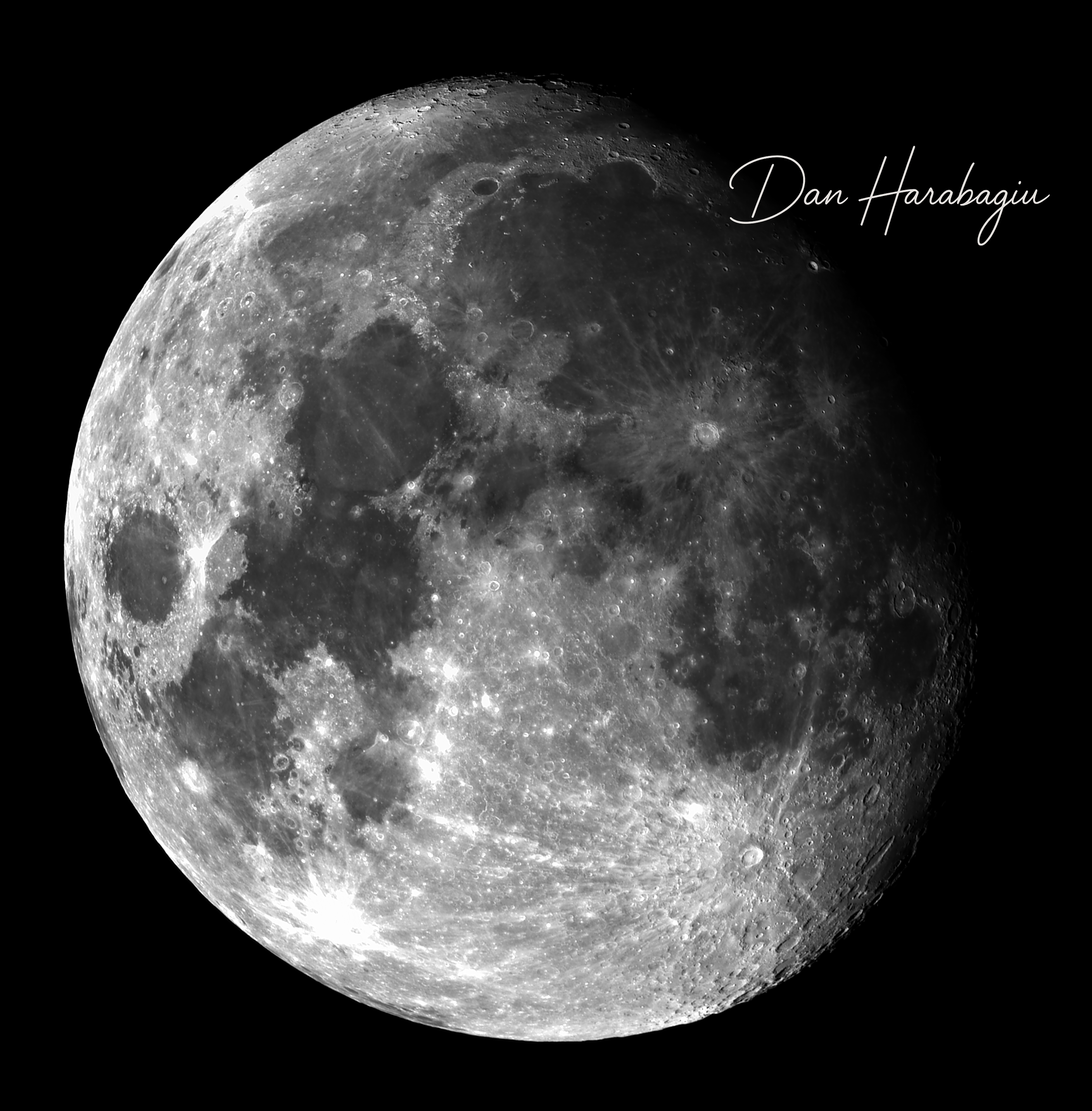 A high-resolution black and white photograph of the Moon’s surface.
A high-resolution black and white photograph of the Moon’s surface.
🌕 Overview
- Object: The Moon (Earth’s natural satellite)
- Phase: Waxing Gibbous (near full)
- Distance from Earth: ~384,400 km
- Apparent Size: ~0.5° in the night sky
- Size on Image: The Moon dominates the frame, with excellent detail and contrast
🧭 Visible Lunar Features
This image shows major lunar surface features, including:
- Mare Imbrium: The large dark sea in the upper left
- Mare Serenitatis & Mare Tranquillitatis: North and east of center
- Tycho Crater: Bright crater with rays in the southern region
- Copernicus Crater: Near center-left with visible ejecta
- Craters and Highlands: Numerous small craters and bright highland regions
- Rayed Systems: Light ejecta trails radiating from impact sites
🧠 Fun Facts
- The Moon has no atmosphere, allowing such crisp shadows and contrast
- The dark areas (maria) are ancient volcanic plains
- The bright streaks around Tycho and Copernicus are ejecta rays from relatively recent impacts
📷 Equipment Used
- Telescope: TS-Optics 80PHQ (544mm f/6.8 Quintuplet APO)
- Camera: SVBONY SV605MC (IMX533 Mono)
- Mount: Sky-Watcher EQ5 Pro
- Exposure: Short to avoid overexposing bright lunar surface
- Software: SharpCap or FireCapture for acquisition, stacked in AutoStakkert, processed in Photoshop or PixInsight
📝 Final Thoughts
Photographing the Moon is always rewarding. Unlike deep-sky objects, it requires short exposures and high resolution to capture fine surface detail. The lack of atmosphere on the Moon creates sharp shadows, enhancing the visibility of craters and rilles.
The Moon is a gateway object — easy to photograph, yet infinitely rich in detail.
Clear skies!